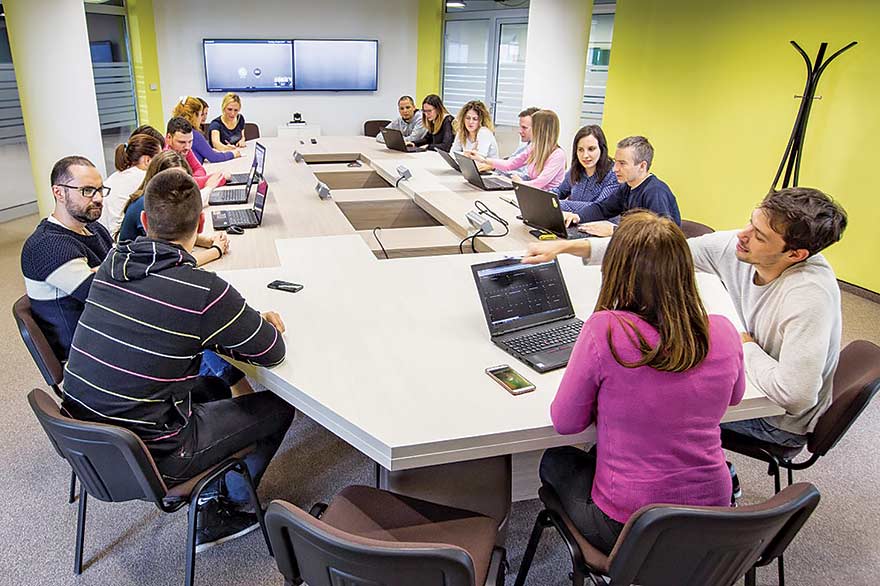It’s a well-known fact that a company’s success is dependent largely on its people. Having a great team of skilled, motivated and proactive employees is becoming a number one priority for managers and business owner wanting to ensure long-term growth. However, the road that leads there isn’t always quite a clear. And that’s where HR comes in
As companies grow bigger and bigger, so does the complexity of the role of HR in their systems. Setting aside all differences of industry and culture, the main goals of HR remain the same: enable the right culture to get the right people and keep them motivated to deliver business results. In order to do this well, HR departments, and especially the chief human resources officer (CHRO), have to be really good at a couple of things.
KNOWING THE CONTEXT OUTWARD-FACING ASPECT

Assuming you are a CHRO, you have to be mindful of the overall circumstances and the context in which the organisation is working. Summing up all the possible risks and opportunities is one of the CHRO’s main tasks, and looking at it through the lens that asks “how great an impact does this have on my company?”. We’re talking about the classic PESTLE analysis – looking at the political, economic, social, technological, legal and environmental context in which you operate.
These contexts are really useful for business strategies and analysis, but looking into it further, from the perspective of the workforce, is very important for creating the right HR strategy.
INWARD-FACING ASPECT BUSINESS PERSPECTIVE
Having a deep understanding of the company’s mission, vision and strategy is crucial for delivering value to that company. This ensures that you can make sense of the causes and effects of certain business moves, in order to get ahead of it, to be prepared and have HR initiatives in line with them, and even ahead of them. True value is thus created – people are ready for the upcoming changes and can achieve their full potential.
PEOPLE PERSPECTIVE
To really know which initiatives could deliver the right shift in your workforce (when required), it is crucial to know your people, as well as the practises and processes that are in place. Having a clear idea of the current culture, management style and systems in place can ensure that you are really aware of the effect that could result from each shift. You should also know if you’re looking to make too big of a shift, one that your organisation can’t get on board with, at least not just yet. If that is the case, considering the current state of affairs, you can suggest gradual shifts that will ease people in and make that change transparent and acceptable to most.
WHERE DO WE WANT TO BE?
With both a deep understanding of the strategy and the inner workings of the company, you can get to the point where you can really see where you want your workforce to be over the long term.
Some of the questions to ask yourself are:
- Is your company strategy going to be best supported (and realised) with the most experienced, highly specialised individuals, or the most innovative, almost disruptive specialists, or a mix of both?
- Do you have all the competencies in the company that will ensure a successful realisation of the strategy? If not, how can you get them: by internally training such people or hiring them?
- Is your line management onboard and aspiring to the same goals? Do they understand the strategy?
- Are your people engaged and motivated to support your mission? Is your vision in line with their passions?
- Are your culture and values reflective of the vision?
These questions are just some of the starting points to get a clear picture of where you need to be in terms of the people in order to achieve the results that your company is striving towards.
HOW DO WE GET THERE?
Now that you know the “where you want to be”, it’s time to assess how long the road to it is, so that you can progress to making it happen. Always have in mind where your workforce needs to be, and align that with potential shifts in company strategy.
The road itself can now become your HR strategy and to make it happen; your role as CHRO is very important. Of course, that then becomes a shared goal within the HR department, and it’s wise to really get your people to see the required shifts and get them to help you chart the way.
By doing this, you’re letting your HR team do their best work.
Your job at this point is slightly different. You need to have your eyes on the charted map and to look at the obstacles down the road, anticipate them, and see how to overcome them and who can help you to do so.
You also need to keep an eye on the engine that is getting you where you want to go – are all the indicators of its health positive?
How to ensure the way you’re going gets easier over the long term?
This is where people skills really come to the fore. A CHRO has to be really at tentive to the needs and aspirations of all key stakeholders in the company – board members, business leaders, C-suite etc., but also needs to have an understanding of their core values and personal goals.
All this is required to build a strong connection of trust with the key stakeholders. You really need to understand how they define success and how they see the road to it. You should also be mindful of how comfortable they are with taking sidetracks to ensure that success is more of a long-term achievement and not just a short-term win.
In this way, when sidetracks are required, or you run into some setbacks and know the way around them, you’ll be able to frame the issue so that you ensure some leeway from the stakeholders that will help you keep on track.
Of course, it is of paramount importance that you make good on your promises and deliver results, otherwise the next sidetrack or setback won’t be as easy to navigate.

